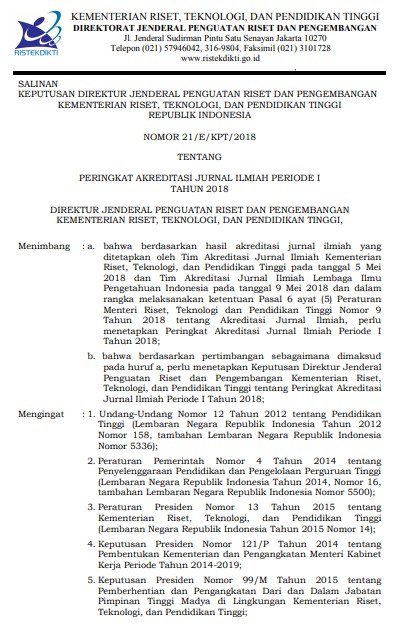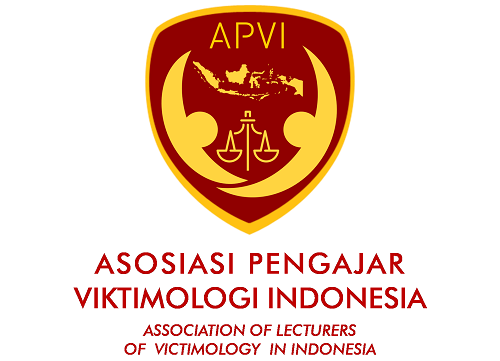Rights of the Indigenous Peoples to Self-Government: A Comparative Analysis between New Zealand and Canada
Abstract
Canada and New Zealand are the western liberal democracies settled by a predominantly English-speaking majority. Their legal and constitutional system depends on English common law. Both Canada and New Zealand have a high percentage of indigenous peoples irrespective of the 4% difference in Canada and 15% in New Zealand. Both states rank high in global comparisons of human development. There exist many differences in the rights of self-government of indigenous peoples in both Canada and New Zealand. These distinctions in the application of the self- government right in local and regional level greatly impacts how indigenous peoples put self- government into practice and brings forth significant questions about which version of these applications best serves the interests of indigenous peoples. This is a comparative study that expounds the differences between constitutions of both countries together with the distinctions in the rights of self-government of indigenous peoples. By using the legal combative method to compare constitutions of Canada and New Zealand and their policies regarding rights of self-government of indigenous peoples, this study concludes that with respect to clear constitutional and legislative recognition of the right of self -government Canada is more advanced. Additionally, this study points out significant institutional work differences between indigenous peoples’ self-government rights in both countries.
Keywords- Canada; Indigenous peoples; indigenous rights; Native; New Zealand; Self-government.
Full Text:
PDF View
References
United Nations (2008) United Nations Declaration on the Rights of Indigenous Peoples. Retrieved from http://www.un.org/esa/socdev/unpfii/documents/DRIPS _en.pdf
UN Doc. E/CN.4/Sub.2/1997/14, para.129. See also UN Doc. E/CN.4/Sub.2/1996/21, paras. 153-154.
The Working Group Report (UN Doc. E/CN.4/Sub.2/1996/21)
Weeks, N. C. (1985). Autonomy of Indigenous Peoples in Canada. York University.
Ibid.
International Covenant on Civil and Political Rights (adopted 16 December 1966, entered into force 23 March 1976) 999 UNTS 171 (ICCPR)
UN General Assembly, International Covenant on Economic, Social and Cultural Rights, International Covenant on Civil and Political Rights and Optional Protocol to the International Covenant on Civil and Political Rights, 16 December 1966, A/RES/2200, available at: https://www.refworld.org/docid/3b00f47924.html [accessed 12 October 2020].
The Canadian Encyclopedia, Indigenous Self-Government in Canada. Retrieved on May 29,2020 from, https://www.thecanadianencyclopedia.ca/en/article/aboriginal-self-government
Ibid.
Imai, S. (2008). Indigenous Self-Determination, and the State. Aboriginal Policy Research Consortium International (APRCI).280.
Weeks, N. C. (1985). Autonomy of Indigenous Peoples in Canada. Autonomy of Indigenous Peoples in Canada. York University
Reinders, K. (2019). A Rights-based Approach to Indigenous Sovereignty, Self-determination, and Self-government in Canada. SURG Journal, 11.
Anaru, N. A. (2011). A critical analysis of the impact of colonization on the Māori language through an examination of political theory (Doctoral dissertation, Auckland University of Technology).
What We Can Learn from New Zealand: for Constitutional Recognition of Indigenous Peoples in Australia. (2014). Cape York Institute. Retrieved on 26 May ,2020, from https://www.aph.gov.au/DocumentStore.ashx?id=764fe11f-9cab-4a6f-8c9a-6f8d92bba731&subId=301030
Ibid, p 6
The Rights of Indigenous Peoples: what you need to know.NZ Human Rights. Retrieved on May 29,2020 ,from https://www.hrc.co.nz/files/5814/5618/4456/NZHR_Booklet_12_WEB.pdf
Māori Population Estimates (2017). State NZ website.
Statistics New Zealand .Accessed on May 12, 2020 from http://www.stats.govt.nz
New Zealand’s 6th periodic review under the Convention Against Torture, (2015) United Nations Committee against Torture. p 5
Statistics on Indigenous peoples in Canada. Statistics of Canada .{Accessed on June 28,2020} from, https://www.statcan.gc.ca/eng/subjects-start/indigenous peoples
Report of the Royal Commission on Aboriginal Peoples, Available at: http://data2.archives.ca/e/e448/e011188230-01.pdf
Ibid.
Permanent Forum on Indigenous Issues, “Study on the impacts of the Doctrine of Discovery on indigenous peoples, including mechanisms, processes and instruments of redress”. (2014). UN Doc. E/C.19/2014/3.available at http://daccessny.un.org/doc/UNDOC/GEN/N14/241/84/PDF/N1424184.pdf?OpenElement
Hawthorn, H. B. (Ed.). (1966). A survey of the contemporary Indians of Canada. Vol I and II. Indian Affairs Branch.
Amadahy, Z., & Lawrence, B. (2009). Indigenous Peoples and Black People in Canada: Settlers or Allies? In Breaching the colonial contract (p 106). Springer.
Vending, D& Mikkelsen, C. The Indigenous World 2016, The International Work Group for Indigenous Affairs (IWGIA). Copenhagen.
See the Indigenous foundations website https://indigenousfoundations.arts.ubc.ca/the_indian_act/
Ibid.
Indigenous Foundations: https://indigenousfoundations.arts.ubc.ca/the_indian_act/
Canada Constitution Act 1982, Section 35.
Implementation of Section 35 (1) and (2), Canada Constitution Act 1982. Retrieved on May 28,2020, from https://sencanada.ca/content/sen/committee/421/APPA/Briefs/ConstitutionAct_2017-09-19_e.pdf
Reinders, K. (2019). A Rights-based Approach to Indigenous Sovereignty, Self-determination, and Self-government in Canada. SURG Journal, 11.
Srikanth, H. (2012). Native Indians' quest for self-government in Canada: Perspectives and prospectus. Indian Journal of Canadian Studies, p 62.
United Nation Declaration on The Rights of Indigenous Peoples, Article 3.
United Nation Declaration on The Rights of Indigenous Peoples, Article 4.
Srikanth, H. (2012). Native Indians' quest for self-government in Canada: Perspectives and prospectus. Indian Journal of Canadian Studies, p 63.
Murphy, M. (Ed.). (2005). The State of the Federation: Reconfiguring Aboriginal-State Relations (Vol. 98). McGill Queens University Press. p 4.
Wilson, G. N., George, P., & Columbia, B. The Nunavik Commission and the path to self-government in Arctic Quebec. Department of Political Science University of Northern British Columbia.
Guide, F. P. (2004). Aboriginal self-government. Government of Canada’s Approach to Implementation of the Inherent Right and the Negotiation of Aboriginal Self-Government.
Indian and Northern Affairs Canada. Available at http://www.aincinac.gc.ca/pr/pub/sg/plcy_e.html
Anderson, E. (2006). Canada's relationship with Inuit: A history of policy and program development. Indian and Northern affairs Canada. P 104
Cook, C., & Lindau, J. (2000). Aboriginal rights and self-government: The Canadian and Mexican experience in North American perspective. McGill-Queen's Press-MQUP. P 254.
Ibid, P.255
Government of Canada, Crown-indigenous Relations and Northern Affairs .Retrieved on June 3, 2020, from https://www.rcaanc-cirnac.gc.ca/eng/1100100031843/1539869205136#inhrsg
Anaya, S. J. (2014). Report of the special rapporteur on the rights of indigenous peoples in the situation of indigenous peoples in Canada. Human Rights Council, Twenty-seventh session, UN General Assembly.
Anderson, E. (2006). Canada's relationship with Inuit: A history of policy and program development. Indian and Northern affairs Canada. P 104
Government of Canada, Crown-indigenous Relations and Northern Affairs. Retrieved on June 3,2020 from, https://www.rcaanc-cirnac.gc.ca/eng/1100100031843/1539869205136#inhrsg (access 3 June 2020)
Ibid.
Irlbacher-Fox, S. (2009). Finding Dahshaa: Self-government, social suffering, and Aboriginal policy in Canada. Vancouver. UBC Press.
NZPCC (1840-1939) 387.
Bennion, T. (2009). "Maori Land". New Zealand Land Law. Wellington: Thomson Reuters. p. 383.
R v Marshall (No 1) [1999] 3 S.C.R. 456 and R v Marshall (No 2) [1999] 3 S.C.R. 533 are two decisions given by the Supreme Court of Canada on a single case regarding a treaty right to fish.
Wi Parata v The Bishop of Wellington (1877) 3 NZ Jur (NS) SC 72.
Lane, M. (2008). Indigenous Peoples Tribal Self Government: Legal History and Public Policy Manifestations in Canada, New Zealand, and the United States. New Zealand and the United States (April 14, 2009). P 111.
Zealand, N., & Law Commission. (2006). Waka Umanga: a Proposed Law for Maori Governance Entities: Also Published as Parliamentary Paper E3192. New Zealand. Law Commission.
Ibid. P 14
Ibid, P 16
Lane, P 110.
Human Rights Commission. (2008) p.74
de Bres, J., & ā Iwi, K. W. (2010). Maori Representation in Local Government: The Continuing Challenge-A Draft Discussion Paper. Wellington: Human Rights Commission. Available at https://www.hrc.co.nz/our-work/indigenous-rights/our-work/maori-representation-local-government/
Trapski,P (1998) The Proposal to Establish a Māori constituency for Environment B.O.P, The Bay of Plenty Regional Council. Retrieved from http://www. envbop.govt.nz/Reports/Maori-980829- EstMaoriConstituencyReport.pdf. (accessed in 17 May 2020)
The Maori Law review, (2014).
Cox, N. (2002). The Treaty of Waitangi and the Relationship Between the Crown and Maori in New Zealand. Brook. J. Int'l L., 28, 123.
DOI: http://dx.doi.org/10.20884/1.jdh.2021.21.1.2878
Refbacks
- There are currently no refbacks.
JURNAL DINAMIKA HUKUM Indexed by :
 | Jurnal Dinamika Hukum | |
| Faculty of Law, Universitas Jenderal Soedirman | Copyright of Jurnal Dinamika Hukum | |
| Yustisia IV Building, Law Journal Center | ISSN 2407-6562 (Online) ISSN 1410-0797 (Print) | |
| Purwokerto, Central Java, Indonesia, 53122 | JDH is licensed under a Creative Commons Attribution 4.0 International License | |






